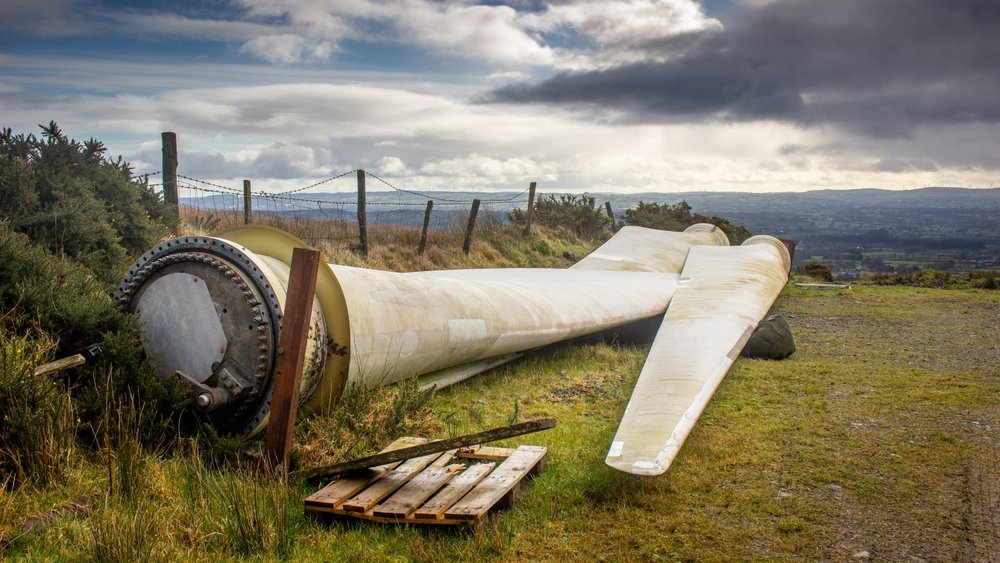The energy transition is presenting Germany with a growing waste disposal problem. Wind turbine scrap, in particular, is becoming a major concern, as thousands of old turbines need to be decommissioned. At the same time, disposal costs, rotor blade waste, recycling bottlenecks, and environmental burdens are creating massive challenges. The scale of this legacy waste is considerable, as more than 30,000 wind turbines are currently operating in the country – many of them nearing the end of their service life. (welt: 06.11.25)
Criminal dealings involving wind turbine scrap metal
A recent case illustrates the scale of the problem. A Bavarian businessman has been arrested after illegally transporting tons of wind turbine scrap metal to the Czech Republic. Together with an accomplice, he moved the scrap material without the necessary permits.

Investigations are underway, but the damage has already been done. The story reveals the high risks of a market where disposal costs and a lack of standards encourage criminal activity, while loopholes are exploited.
Pressing Problems with Wind Turbine Blade Waste
Up to 555 wind turbines disappear annually – 210 in the first half of 2024 alone. However, the old parts consist of hazardous materials. Wind turbine blade waste, particularly from carbon fiber reinforced polymer (CFRP) and glass fiber reinforced polymer (GFRP), is a major problem. According to the German Federal Environment Agency, almost 600,000 tons of this waste will accumulate in the coming years. But an industrial solution is lacking. Instead, there is a growing threat of environmental pollution from unsecured landfills. The environmental burden is increasing.
High Disposal Costs Drive Negative Developments
Dismantling and disposing of a wind turbine is expensive. Disposal costs usually exceed €300,000 – even more for larger models. The market is reacting with creativity: this is leading to recycling initiatives, but also to illegal practices. This exacerbates the recycling bottleneck, while authorities struggle to maintain oversight. At the same time, the hazardous waste materials have long been endangering soil and groundwater.
Wind Power: A Success Story with Dark Sides
Companies like Roth International saw this as a lucrative business opportunity. But this criminal case shows how fragile this model is. The demand for solutions for old wind turbine scrap remains high – while the market for old rotors and concrete foundations fluctuates. Technical innovations are lagging behind, the environmental burden is growing, and specialized dismantling companies can barely keep up. Clear legal regulations are still lacking.
The recycling bottleneck is worsening
More than 10,000 German wind turbines are approaching the end of their lifespan. The industry is struggling to establish voluntary standards, but without any tangible success. Experts emphasize: “When it comes to dismantling old wind turbines, we’ve been stuck in the same place for years.” Meanwhile, the black market demonstrates just how critical the situation has become. Clear structures are needed, otherwise the next wave of waste disposal problems is inevitable. Germany faces the challenge of finally finding sustainable solutions for the legacy issues of the green energy industry.
